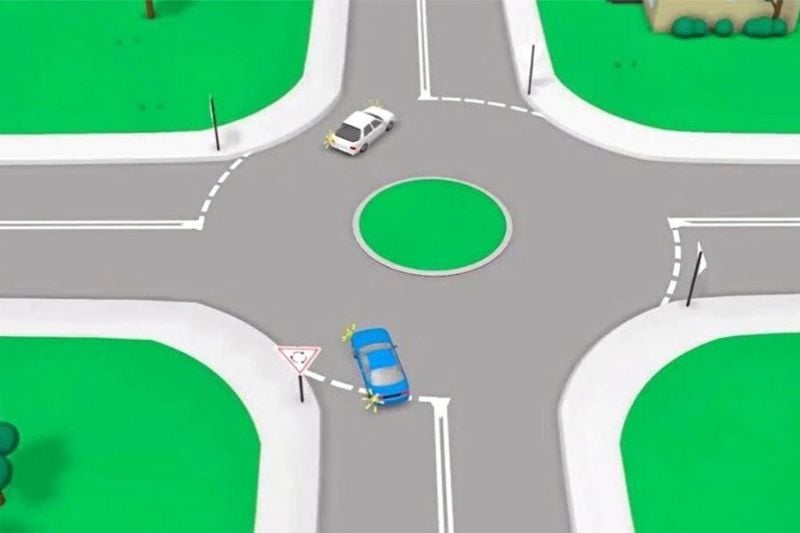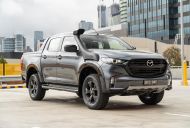Roundabout laws are some of the most confusing in Australia. These traffic circles tend to confuse anyone who is not used to driving through or around them, and – anecdotally, at least – they are a source of confusion for many motorists.
- You can change lanes in a roundabout, but only in certain circumstances
- It is illegal to cross a solid line – if the roundabout has them, you’re stuck!
- Rules are largely similar across all states and territories
So, what do you do if you’re in a roundabout but need to change lanes because you realise you’ve found yourself in the wrong one? Well, treat it like any other multi-lane situation, but remember to check around your car and be mindful of the line markings.
Here’s a rundown of the info from each state for this exact scenario.Obviously, these mainly apply to multi-lane roundabouts, which typically have lane markings to indicate the correct direction vehicles should travel. At the same time, in a single-lane traffic circle, you could simply go where you need to – at least in theory.
The common denominator across jurisdictions appears to be that, if the roundabout has solid line markings, you shouldn’t cross them – just as you wouldn’t cross a solid line on a standard multi-lane roadway. So, if you enter a roundabout and you’re not in the lane you need to be, and the line-marking is solid, it stands to reason that you’re stuck, and need to proceed in the intended direction of the lane-marking.
NSW: According to NSW Transport, changing lanes is a legal manoeuvre in a roundabout, but the best advice is to “plan ahead when approaching a roundabout to avoid changing lanes when you’re in the roundabout”.
However, as the authority puts it: “If you need to change lanes, you must indicate and give way to any vehicle in the lane you’re moving into. You can only change lanes where there’s a broken white line. You must not change lanes if the line is unbroken. Always remember to check your blindspot when changing lanes.”
Victoria: If you need to change lanes in a roundabout, the same rules apply: let other vehicles know by indicating, and give way to any vehicle that is already in the lane you want to enter.
Queensland: There are some confusing wordings in QLD when it comes to roundabouts.
The state tries to make out that comparing a roundabout to a clock could help people understand how to act in said traffic circle:
Turns that occur at roundabouts can be described by imagining the roundabout to be a clock face. Any turn that exits the roundabout before 12 o’clock can be considered a left turn.
Any turn that exits the roundabout after 12 o’clock can be considered a right turn.
Straight ahead at a roundabout is taken to be at half-way around or at 12 o’clock.
The Queensland Road Rules uses the terms ‘less than half-way round’ and ‘more than half-way around’.
Huh??
Anyway, Noosa Council – home of the roundabout in that neck of the woods – states it simply when it comes to changing lanes: “In some cases on a multi-lane roundabout, it may be necessary to change lanes before exiting. If you are changing lanes you must give way to vehicles in the lane you are moving to.”
South Australia: SAMove has a few interesting articles concerning roundabouts and states that it is not illegal to change lanes in a roundabout, and often necessary (the big ones in Adelaide – Britannia and Blackwood – are apparently terrifying for some drivers). But just like the other states, it is not illegal to change lanes in a roundabout if you have to, but rule apply:
“The same rules apply when switching lanes on a roundabout as they do with other lane changes. You need to indicate your intentions and give way to traffic already in the lane.”
Tasmania: According to the “Top 10 misunderstood road rules in Tasmania” pamphlet from the state’s Road Safety Advisory Council, roundabouts are number one!
However, the document confirms: “Changing lanes in a roundabout – you may change lanes in a roundabout when it is safe to do so. You must indicate before changing lanes, in addition to indicating when entering and leaving the roundabout.”
Western Australia: The WA RAC states that: “If you do need to change lanes once you’ve entered a multi-lane roundabout, wait until it’s safe, then signal a move into the correct lane. From there, you must indicate your exit as you would on any roundabout.”
ACT: Canberra is known for being a city designed with traffic flow in mind, and roundabouts are a big part of the way the nation’s capital’s roadways have been laid out. As such, there are many and varied rules for correct roundabout use, but the ACT follows a similar logic to other jurisdictions. The 2019 Road Rules Handbook states: “Giving a change of direction signal when changing marked lanes or lines of traffic in a roundabout; A driver driving in a roundabout must: give a left change of direction signal before the driver changes marked lanes to the left, or enters a line of traffic to the left, in the roundabout; give a right change of direction signal before the driver changes marked lanes to the right, or enters a line of traffic to the right, in the roundabout.”
Northern Territory: No specific rules relating to lane changing in the Road Rules in NT documentation that we could see, but the NT’s guidelines state: “It is important to stay in the correct lane at multi-lane roundabouts – follow signs, lane markings and arrows. Unless traffic lane arrows indicate otherwise, remember these rules:
- To turn left, use the left lane and signal left.
- To turn right, use the right lane and signal right.
- To go straight ahead, use either the left or right lane.
- Give way to any vehicle already in the roundabout.
- Signal left when exiting the roundabout.
Not intended as legal advice. Check with the relevant roads authority in your state or territory.





